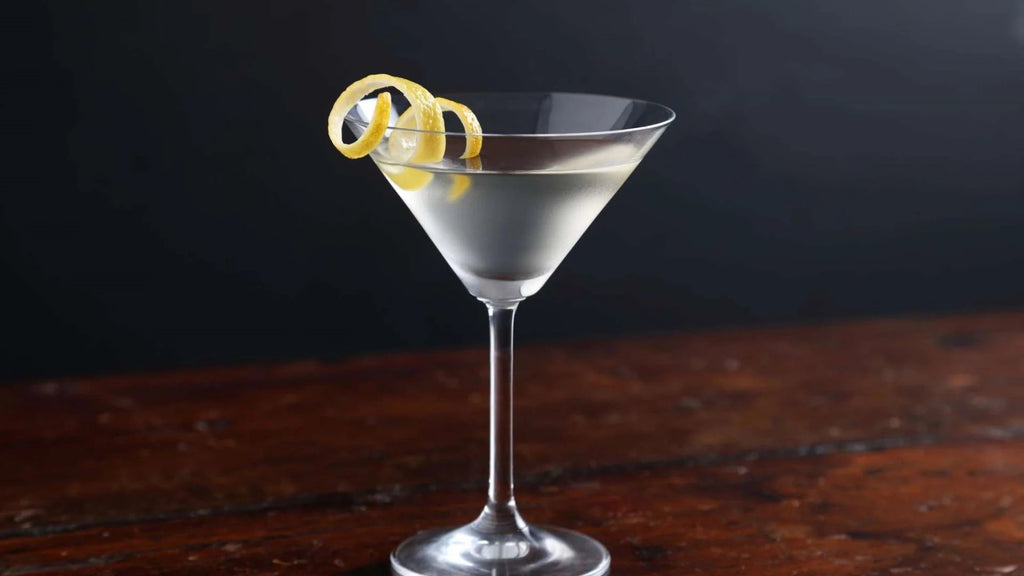HISTORY
The martini is one of the most widely known cocktails
The exact origin of the martini is unclear. The name may derive from the Martini brand of vermouth. Another popular theory suggests it evolved from a cocktail called the Martinez served sometime in the early 1860s at the Occidental Hotel in San Francisco, which people frequented before taking an evening ferry to the nearby town of Martinez, California. Alternatively, residents of Martinez say a bartender in their town created the drink, while another source indicates that the drink was named after the town. Indeed, a "Martinez Cocktail" was first described in Jerry Thomas's 1887 edition of his Bartender's Guide, How to Mix All Kinds of Plain and Fancy Drinks:
- Take 1 dash of Boker's bitters
- 2 dashes of Maraschino
- 1 pony [1 fl oz] of Old Tom gin
- 1 wine-glass [2 fl oz] of [sweet/Italian] vermouth
- 2 small lumps of ice
Shake up thoroughly, and strain into a large cocktail glass. Put a quarter of a slice of lemon in the glass, and serve. If the guest prefers it very sweet, add two dashes of gum syrup.
Other bartending guides of the late 19th century contained recipes for numerous cocktails similar to the modern-day martini. For example, Harry Johnson's Bartenders' Manual (1888) listed a recipe for a "Martini Cocktail" that consisted in part of half a wine glass of Old Tom gin and a half a wine glass of vermouth
- Fill the glass up with ice
- 2 or 3 dashes of gum syrup
- 2 or 3 dashes of bitters; (Boker's genuine only)
- 1 dash of Curaçao
- 1⁄2 wine glassful [1 fl oz] of Old Tom gin
- 1⁄2 wine glassful [1 fl oz] of [sweet/Italian] vermouth
Stir up well with a spoon, strain it into a fancy cocktail glass, squeeze a piece of lemon peel on top, and serve
The first dry martini is sometimes linked to the name of a bartender who concocted the drink at the Knickerbocker Hotel in New York City in 1911 or 1912. The "Marguerite Cocktail", first described in 1904, could be considered an early form of the dry martini, because it was a 2:1 mix of Plymouth dry gin and dry vermouth, with a dash of orange bitters
During Prohibition in the United States, during the mid-20th century, the relative ease of illegal gin manufacture led to the martini's rise as the locally predominant cocktail. With the repeal of Prohibition, and the ready availability of quality gin, the drink became progressively drier. In the 1970s and '80s, the martini came to be seen as old-fashioned and was replaced by more intricate cocktails and wine spritzers, but the mid-1990s saw a resurgence in the drink and numerous new versions
INGREDIENTS
60 ml Gin
10 ml Dry Vermouth
METHOD
Pour all ingredients into mixing glass with ice cubes. Stir well. Strain into chilled martini cocktail glass
GARNISH
Squeeze oil from lemon peel onto the drink, or garnish with green olives if requested

Image from :theoxfordmagazine.com
———————————————————————————————————————————————————————————————————————————————
While learning to bartend, remember to prepare a set of Kitessensu Cocktail Shaker to make your bartending smoother
Text from :Wikipedia and Iba-World









